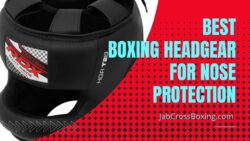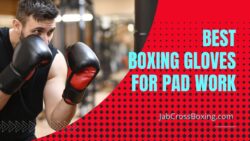Boxing is a sport in which participants compete by punching each other. There are many different types of boxing, including Olympic and professional boxing, amateur boxing, and the less-common street fighting or bare-knuckle boxing.
No matter what type of boxing you engage in, it’s important to protect your nose with headgear. While most people know that headgear protects the face from punches to the eye area (closed fists), they don’t realize that headgear also provides protection for your nose (open hands).
If you want to make sure your noggin is well protected while training or competing in any type of event let alone when sparring with someone who has good power behind their punches, make sure you wear the proper gear to the ring.
TL;DR: Sure, boxing headgear protects your nose, face, and eyes from being hurt, but only up to some limits. During training/sparring, you should have headgear to get some level of protection.
What to look for in the best headgear for nose protection?
Take a look at some of the factors we consider when selecting the best boxing headgear:
Visibility:
Boxing headgear with larger eye openings will allow for better visibility when sparring which is important when gauging your distance from your opponent and overall awareness during the fight.
However, this is a double-edged sword as larger eye openings also equate to more exposure and risk during the fight.
Closure system:
If you’re sparring, the last thing you want is for your headgear to fly off in the middle of a match which can happen when using Velcro straps (lack of strength) or when they get caught on something (awkward pull).
Luckily, many boxing headgears come with an adjustable strap at the back which provides an ideal fit and ensures that it will stay in place even if one strap becomes loose.
Level of coverage:
There are several types of boxing headgear each providing different levels of protection and visibility. Some boxers only like to use only open face or “grind” headgear, while others prefer using full-face boxing headgear.
No matter what type of boxer you are and how much protection you like to wear during your matches, make sure that you find the right headgear for your personal preference as well as training regimen (i.e., sparring or bag work).
Some boxers will even use a combination of different types of gear depending on what they’re working on that day (i.e., open/closed face) so it’s important to have a few types at home to choose from.
What is a safe amount of force?
The degree to which a punch causes damage is not dependent upon the weight behind it but rather its velocity – how quickly the weight travels upon impact. This is why many people who box choose to wear headgear even when sparring because it provides an additional level of protection against your opponent’s punches should you not avoid them in time.
Headgear has its limitations though as there is no helmet or headgear that can protect your nose entirely (noses are far too sensitive) from a direct punch, however, the use of the protective gear is recommended for increased awareness and safety during boxing matches.
Don’t forget about proper training times too – being thrown into a ring with an inexperienced fighter will put you at risk for injury just as much as engaging in any other type of fight so make sure you have scheduled sessions with a trainer before entering the ring to compete.


